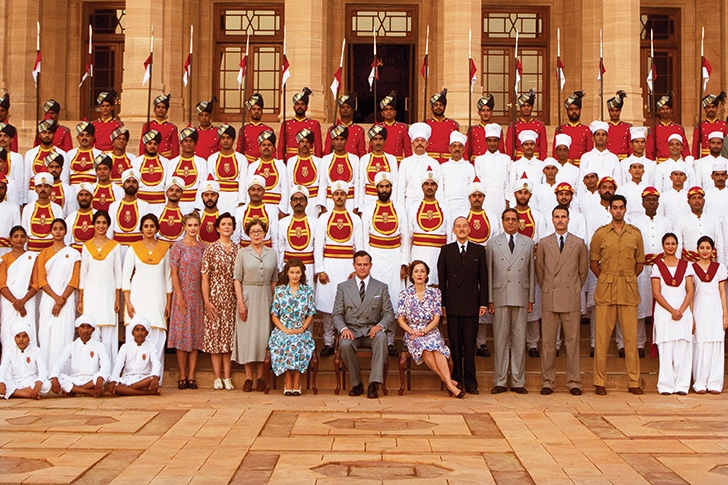Gurinder Chadha’s modern comedies have fun with cultural divides. Girls kick footballs in Bend It Like Beckham. A gaggle of Punjabis hit Blackpool in Bhaji on the Beach. Jane Austen goes to Bollywood in Bride & Prejudice. In all these films (we may discount Angus, Thongs and Perfect Snogging), Indians and Britons grapple with the knotty ongoing project of mutual comprehension.
But there are only so many perky scripts anyone can shoot about multiculturalism. In Viceroy’s House Chadha spools back 70 years to Partition, when the price of India’s independence from her colonial master was to be sundered in two, unleashing what remains the planet’s largest ever migration of refugees. It may not sound like Chadha’s sort of caper but, as is revealed in the closing credits, her grandparents were among those 14 million on the move in 1947.
Chadha confines her historical epic to the official residence of the final viceroy. Lord Dickie Mountbatten (Hugh Bonne-ville), receiving one of the 20th century’s greatest hospital passes, arrives togged up like a well-meaning cockatoo and proceeds to bumble through the independence negotiations with India’s foxlike leading politicos. Along for the ride are his helpmeet Edwina (Gillian Anderson), whose core duty is to stiffen Dickie’s spine and, in this chaste telling, keep her hot hands off Nehru.
It’s not all about the doings of state. The titular residence (shot in the maharajah’s palace in Jodhpur) bustles with staff from all corners of the subcontinent. Hindus, Sikhs and Muslims cook, guard, serve and, more than anything, eavesdrop on the nabobs deliberating their future. They form a squabbling microcosm of India’s vast simmering cauldron. The leading players in the schismatic below-stairs drama are a pair of star-crossed lovers, a Muslim and a Hindu (Huma Qureshi and Manish Dayal), whose romantic plotline builds to a shattering climax that nods to Doctor Zhivago and Les Enfants du Paradis.
The teeming canvas looks suitably magnificent: Chadha pays homage to Raj filmo-graphy in the immaculate livery, the gleaming palace, the green lawns in the sapping heat. But unlike Richard Attenborough’s Gandhi, Viceroy’s House doesn’t have three hours to play with. The script is obliged to plant speak-your-weight bullet points in the mouths of the main players (‘Darling, did you know that 92 per cent of the population are illiterate?’). In the most absurd scene four stuffy provincial governors with bemedalled chests tell one another things they already know.
Chadha sprints through the history with recourse to old footage, mocked-up newsreels and gobbets of royal gossip — cousin Lilibet is namechecked, as is Dickie’s unlucky uncle Tsar Nicholas II. But she’s a more confident comedian than historian and never ignores the scent of a smart joke. When a Scottish martinet in charge of the household is slugged by a Muslim guard it reminds him of a Saturday night in Glasgow. Palace staff dividing the spoils between India and Pakistan fight over everything down to the Brontës in the library.
There are problems with the Mountbattens. They have a flatlining character arc for one, while Bonneville — decent to his manservants, no fan of skulduggery — has sung this slightly monotonous tune ad infinitum for Lord Fellowes. As for Anderson, she has put her vowels through a mangle: they emerge as strangulated emissaries from an alternative history. Michael Gambon schemes in the shadows, Simon Callow sweats as a top lawyer tasked with dicing up India, Neeraj Kabi plays Gandhi as toothless, wily and comically keen to share his goat’s curd milk. The most commanding and plausible performance is from Denzil Smith as the lordly Jinnah.
Viceroy’s House is a perfectly decent primer, and it’s high time this geopolitical powderkeg had its resonant moment in the multiplex. But a bit like India and the putative Pakistan, it doesn’t quite know if its many moving parts all belong under the same roof.






Comments